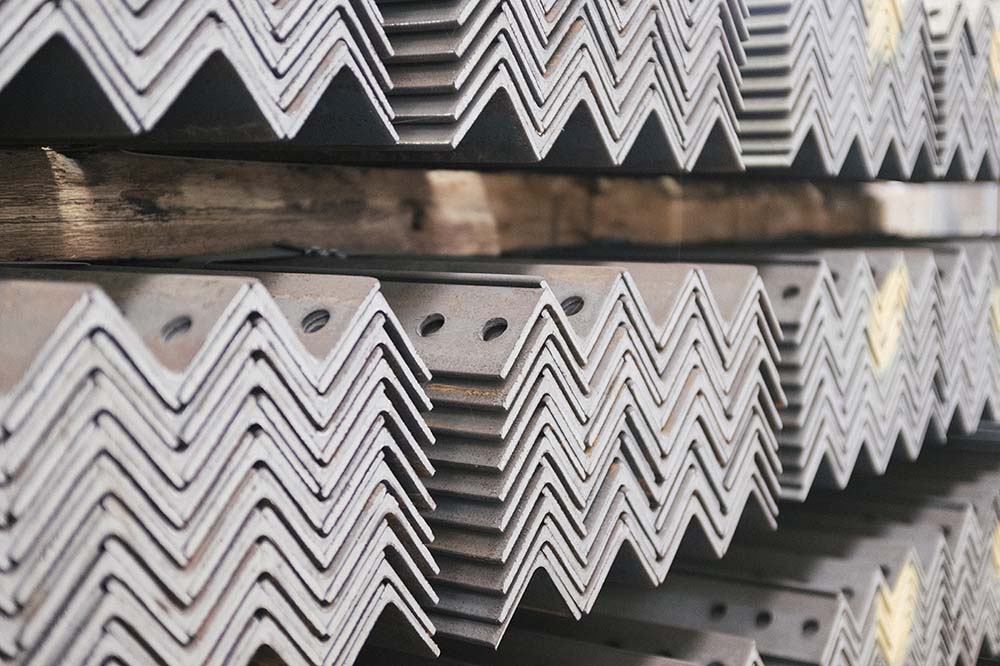Steel angles are indispensable components in construction, engineering, and manufacturing, offering structural support and stability across various applications. To ensure their reliability and performance, steel angles are manufactured to comply with specific standards and grades. These classifications define the physical and chemical properties of the steel, guiding engineers and architects in selecting the right materials for their projects. In this article, we delve into the common standards and grades for steel angles, their significance, and how they influence material performance.

What Are Steel Angles?
Steel angles are L-shaped cross-sectioned components that provide support and stability in structural frameworks. They come in two primary configurations:
- Equal angles, where both legs are of the same length.
- Unequal angles, where one leg is longer than the other.
Steel angles are used in a wide range of applications, including the construction of bridges, buildings, industrial equipment, and even decorative structures. To meet diverse requirements, steel angles are produced in various dimensions, grades, and standards.
Importance of Standards and Grades
Standards and grades are crucial for maintaining consistency in the quality of steel angles. These classifications ensure that the steel meets required mechanical properties like tensile strength, yield strength, and elongation. Adherence to standards minimizes risks, enhances safety, and ensures compatibility with other materials and components.
Common Standards for Steel Angles
-
ASTM Standards (American Society for Testing and Materials)
-
-
- ASTM A36: This is one of the most widely used standards for carbon steel angles. It specifies minimum yield strength of 36,000 psi, making it ideal for general structural applications like bridges and buildings.
- ASTM A572: Available in various grades (e.g., Grade 50), this standard covers high-strength, low-alloy steel, often used in heavy-duty structural projects.
-
-
ISO Standards (International Organization for Standardization)
-
-
- ISO 657-1: This standard defines the dimensions and tolerances for hot-rolled steel angles. It ensures uniformity in size and shape across international markets.
-
-
EN Standards (European Standards)
-
-
- EN 10025: This standard includes grades like S235, S275, and S355, which are commonly used in structural steel applications across Europe. Each grade has different mechanical properties suited for specific load-bearing requirements.
- EN 10279: Focused on hot-rolled steel sections, including angles, this standard specifies dimensional tolerances.
-
-
IS Standards (Indian Standards)
-
-
- IS 2062: A prevalent standard in India, IS 2062 defines structural steel for general engineering purposes. Common grades include E250, E350, and E410, with increasing levels of strength and toughness.
- IS 808: This standard specifies dimensions for hot-rolled steel sections, including angles, ensuring compatibility in construction projects.
-
-
JIS Standards (Japanese Industrial Standards)
-
- JIS G3101: This standard covers general structural steel, including SS400-grade steel angles, known for their excellent weldability and strength.
Common Grades for Steel Angles
Grades are classifications that describe the composition and mechanical properties of steel. They dictate the material’s performance under different conditions.
-
Carbon Steel Grades
-
-
- Grade A36: A standard choice for general structural applications, known for its affordability and ease of fabrication.
- Grade A572: Ideal for high-strength applications, this grade is commonly used in bridges, towers, and other load-bearing structures.
-
-
High-Strength Low-Alloy (HSLA) Steel Grades
-
-
- S275 and S355 (EN 10025): These grades are commonly used in Europe for construction and engineering. They offer a balance between strength, ductility, and weldability.
- Grade 50 (ASTM A572): Provides enhanced strength and resistance to atmospheric corrosion, suitable for demanding structural applications.
-
-
Stainless Steel Grades
-
-
- Grade 304: Offers excellent corrosion resistance and is widely used in architectural and marine applications.
- Grade 316: Known for superior corrosion resistance, especially in chloride-rich environments, making it suitable for chemical processing and coastal projects.
-
-
Galvanized Steel Grades
-
- Steel angles with a galvanized finish are often manufactured to meet standards like ASTM A123 or ISO 1461, ensuring durability in outdoor and corrosive environments.
Factors to Consider When Choosing Steel Angles
- Load Requirements: Determine the tensile and yield strength required for your project and select a grade that meets those needs.
- Corrosion Resistance: For environments prone to moisture, chemicals, or salt, opt for stainless or galvanized steel.
- Fabrication Needs: Grades like A36 are easier to cut, weld, and fabricate, while high-strength grades may require specialized tools and techniques.
- Standards Compliance: Ensure the steel angles comply with local or project-specific standards to avoid compatibility issues.
Conclusion
Understanding the common standards and grades for MS angles is essential for selecting the right material for your project. Standards like ASTM A36, EN 10025, and IS 2062 provide guidelines for dimensions, tolerances, and mechanical properties, ensuring consistency and reliability. Grades such as A36, S275, and 304 stainless steel cater to various applications, from basic structural frameworks to corrosion-resistant installations. By considering factors like load requirements, corrosion resistance, and fabrication needs, you can make informed decisions, ensuring the success and longevity of your construction or manufacturing project.
Author’s Bio
Victor Daniel is a seasoned metallurgist with extensive experience in material science and steel manufacturing. Based in Chennai, Victor has spent years analyzing and optimizing steel products for various industrial and construction applications. His expertise spans TMT bars, structural steel, and specialized coatings like galvanized and PPGL. Victor’s insights are highly valued in the steel industry, where he frequently contributes articles and technical papers. Outside work, he is passionate about educating others on the importance of quality materials in sustainable construction.

